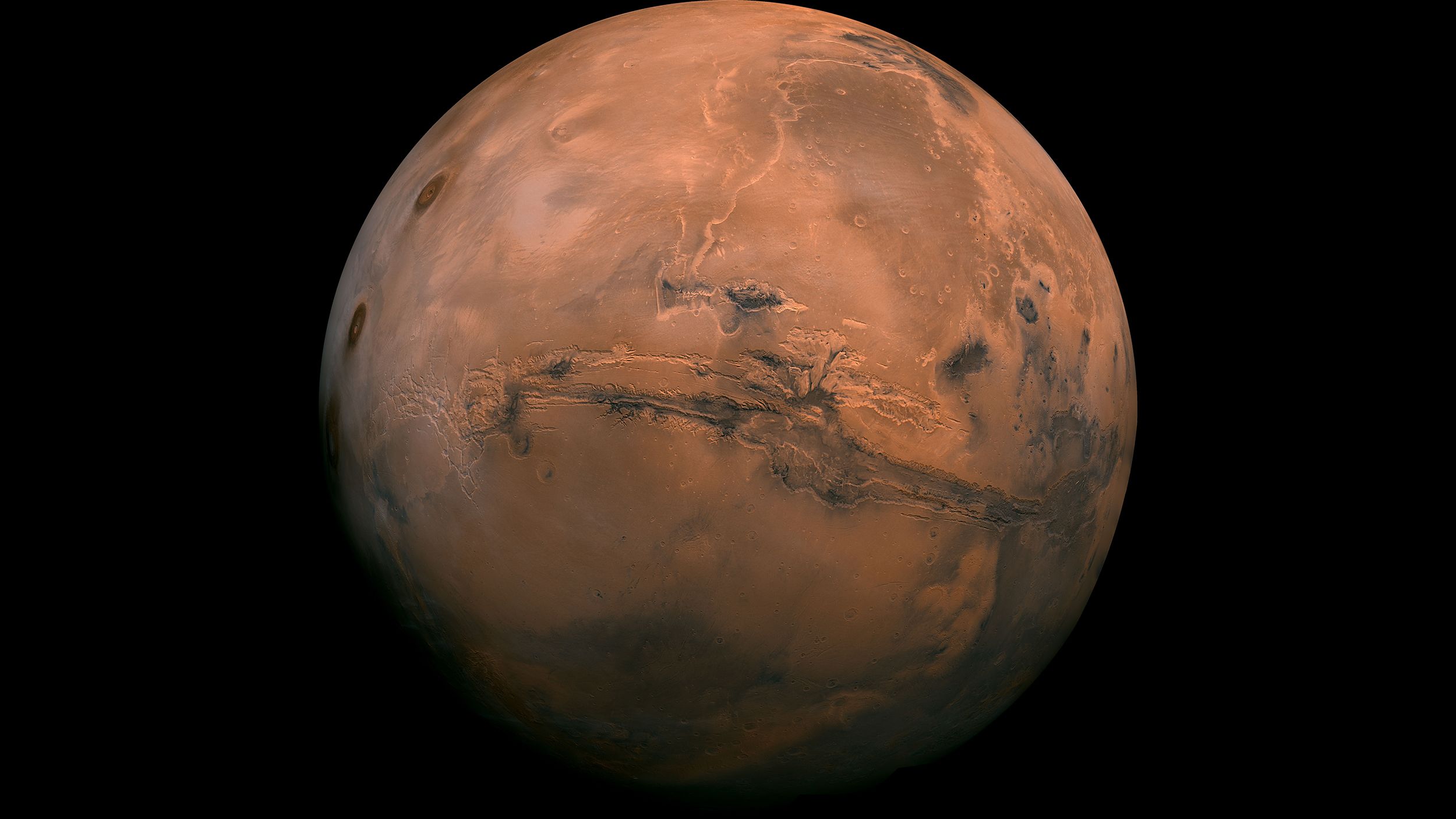
"The Red Planet"
Mars, the fourth planet from the Sun, captivates astronomers and dreamers alike with its stark, reddish appearance, earning it the moniker "the Red Planet." Situated beyond Earth in the solar system, Mars is about half the diameter of Earth but holds a special place in the study of planetary science due to its similarities and differences with our home planet. Its surface is characterized by vast deserts, towering volcanoes like Olympus Mons—the largest in the solar system—and deep valleys such as Valles Marineris. The planet's thin atmosphere, primarily composed of carbon dioxide, and its seasonal weather patterns, including dust storms, provide insights into terrestrial atmospheric processes. Recent missions to Mars have focused on exploring its potential to support life, past or present, and the feasibility of human colonization. As technology and interest in space exploration advance, Mars remains a central focus of scientific inquiry and imagination, symbolizing the quest for knowledge beyond our Earthly confines.
| Diameter | 6,779 km |
| Gravity | 3.721 m/s² |
| Moons | 2 (Phobos and Deimos) |
| Orbital Period | 687 Earth days |
| Surface Temperature Range | -153 °C to 20 °C |
| Atmosphere Composition | Mostly CO₂, with nitrogen and argon |
| Surface Pressure | 0.636 kPa |
| Polar Ice Caps | Water ice and frozen CO₂ |
